Claudia relates on her visit to Dia.Lo.Gue, and art gallery in Jakarta, and shares a reflection on how art can spread empathy.
I recently visited Dia.Lo.Gue, a beautiful art gallery in Jakarta. While admiring the art exhibition, What Expats Can Do was constantly on my mind, and I could find lots of links between the art works and the issues I have been particularly careful about since we launched it.
Dia.Lo.Gue is a modern art gallery that regularly invites artists to express themselves around a specific topic. The one the current exhibition is about is “The sea”, and it was interesting to observe how this call had set young artists in motion in a variety of ways. Whatever piece of work they had created around the sea, it always had an element of empathetic observation and sharing.
This one for instance:
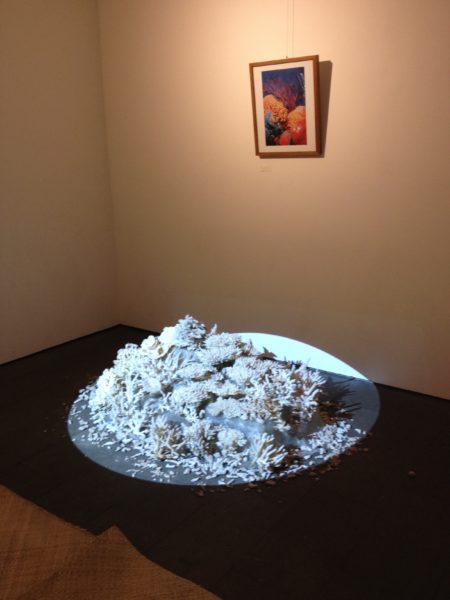
It stages the funeral of the coral, the same way funerals are carried out in Indonesia: The corpse is laid on a carpet, his picture on the wall, and mourners come to pay respect.
Right in front, another art work was a praise to the women of Muara Angke, a neighbourhood on the sea, in the northern part of Jakarta. Muara Angke is known for its intense activity that revolves around fishing and preparing fish to be sold at the warungs (little stalls that sell food). While locals call it a “fishing village”, expats define it a slum because of the appalling living conditions of its inhabitants. In particular, according to this artist, of their women: They spend their days working under terrible conditions, and have nowhere to put their children, so they take them along and keep them on the spot the whole day, while they clean, cut and press fish. The terrible smell of dead fish fills the air, while these women talk about the hardship of their lives, the husbands who have left them, the children who get sick. The artist chose to represent breasts as symbols of motherhood. In this context, breasts have been dried up and are filled with clam shells, to explain how the inhuman work has replaced mothers’ milk, and therefore, life.
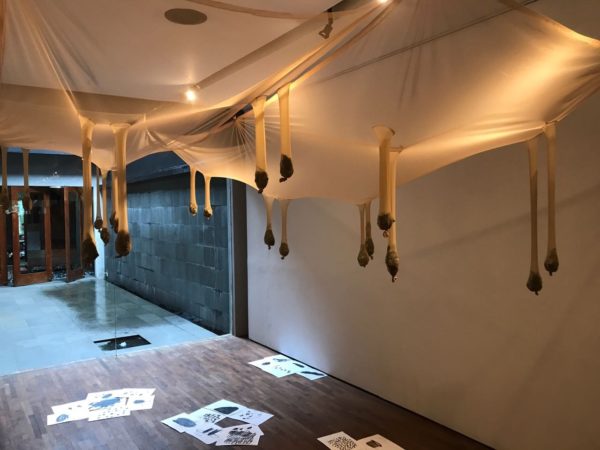
On the other side of this work of art was a more cheerful but not less important one. The artist had chosen to concentrate on a certain era at the beginning of last century, during which a group from Makassar (Sulawesi) traded sea cucumbers with the Yoingu tribe from Northern Australia. Apparently it was a time of frequent and warm contacts, and what the artist chose to recreate is a symbolic composition that the Australian group put together to welcome the Indonesian traders: A closed circle made of stones symbolized unity, friendship and embrace.
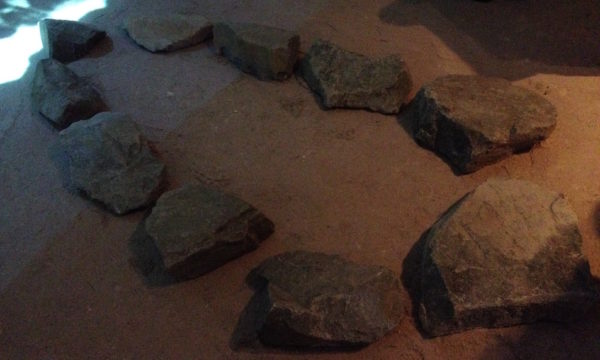
The last artwork also talked about the hardship of Muara Angke. It consisted of a carpet of clam shells, a wooden hut and a video. The idea came to the artist when she visited the portion of the Muara Angke where mussels are processed to be sold. They are boiled in huge pots, then spread on the ground, opened with bare hands and set aside to dry before being sent to the shops. Smoke from the burning wood to boil the mussels, vapors, high temperatures and clam shells fill the environment. The workers and their children sit on dirty and cutting clam shells, and to show this, the artist made a carpet on which visitors can walk, hearing the cracking sound of the broken clam shells and figuring the working conditions. They even build their houses on them, with whatever piece of wood they can find. The hut is a replica of these adobes, and the video explains what the imagination cannot grasp.
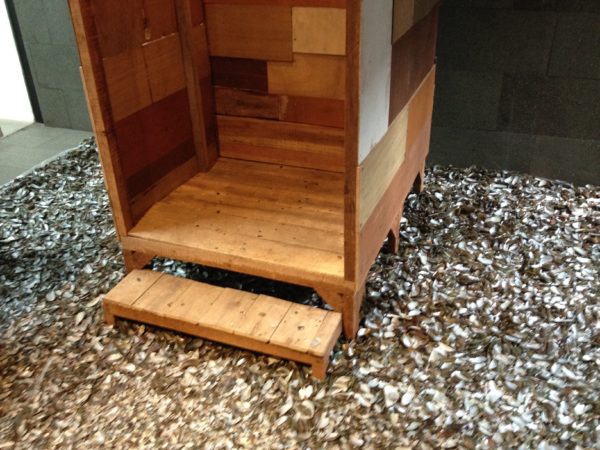
A friend of mine who had come to visit me in Jakarta a while ago had been to that neighborhood and had showed me some pictures, like this one:
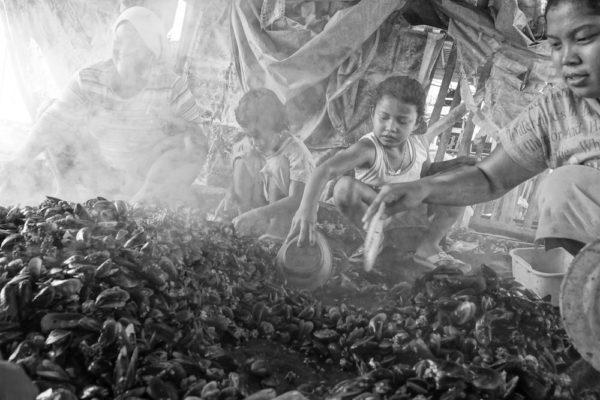
Photo ©Jean Clauzet
Seeing this work of art brought back the memory of the shock I had felt when I had seen them. I decided I’ll visit the neighborhood in person after the Christmas break – as a way of nurturing my empathy and express it to others.
The stories these artists chose to tell through their works have obviously touched them to a certain extent. The inspiration sometime came from tragic and demeaning situations, more rarely from uplifting ones. In any case, they chose their art as a means to share what they witnessed. All through the visit I thought that what these artists do is What Expats Can Do: Observe with empathy, take in and give out to the world. They chose art as a way of communicating; we can choose any means we deem appropriate. What is important, though, is that we never forget that we are in a privileged position to observe things that our communities back home will probably never witness first-hand. It is our duty to talk about them.
Claudia Landini
Jakarta, Indonesia
December 2016
Photos by Claudia Landini

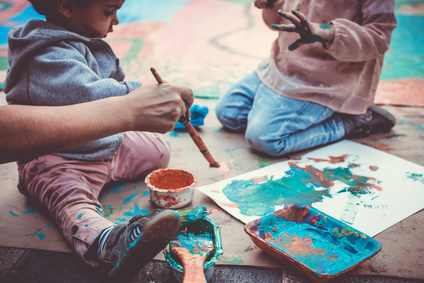 It could have been an ordinary well organized expat playgroup, like many I used to go to with my children in the past and in other countries.
It could have been an ordinary well organized expat playgroup, like many I used to go to with my children in the past and in other countries.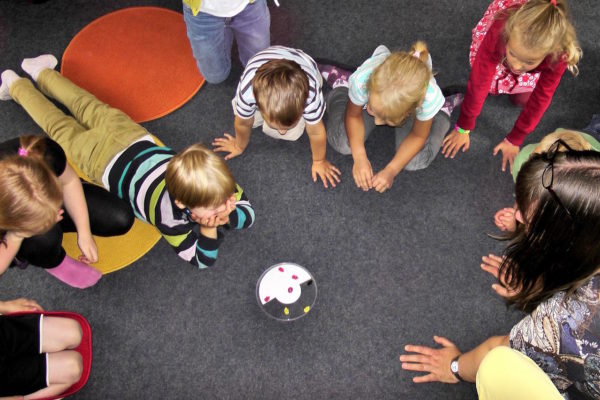 These women continued to be socially isolated and had little reason to leave the refugee shelter except to shop for food and clothing. Most of their time is spent indoors, caring for their young children without the aid of their own toys or care items, such as pushchairs/buggies and highchairs. We believed the playgroup concept would be a good way to reach out to these women and children. It also held promise of a way to pass on things like clothes, toys and baby-care items – things that are readily available from international families in our networks who are often on the move.
These women continued to be socially isolated and had little reason to leave the refugee shelter except to shop for food and clothing. Most of their time is spent indoors, caring for their young children without the aid of their own toys or care items, such as pushchairs/buggies and highchairs. We believed the playgroup concept would be a good way to reach out to these women and children. It also held promise of a way to pass on things like clothes, toys and baby-care items – things that are readily available from international families in our networks who are often on the move. This book takes us on a fascinating journey through human evolution, a journey covering ground that our collective sentiment, for the most part, has not yet explored. The discovery of mirror neurons – so-called empathy neurons – during the 1990s offers a completely different interpretation and is leading scientists from a wide range of disciplines to rethink the theories that characterized the age of reason. Today the cognitive sciences seem to recognize that the most profound human instinct is not the anticipation of pleasure, nor even the struggle for survival or the selfish fulfillment of our own needs, but rather the creation of social ties.
This book takes us on a fascinating journey through human evolution, a journey covering ground that our collective sentiment, for the most part, has not yet explored. The discovery of mirror neurons – so-called empathy neurons – during the 1990s offers a completely different interpretation and is leading scientists from a wide range of disciplines to rethink the theories that characterized the age of reason. Today the cognitive sciences seem to recognize that the most profound human instinct is not the anticipation of pleasure, nor even the struggle for survival or the selfish fulfillment of our own needs, but rather the creation of social ties.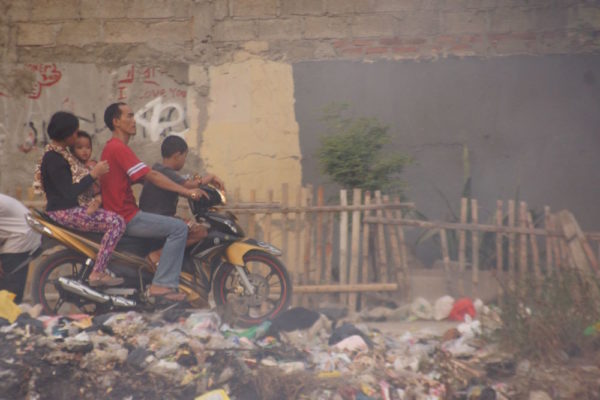 My family is not rich. My mom works as a maid and my dad moves from one casual job to another. The motorbike is essential for my mom to reach work every day, for my dad to job-hunt, and for us to go to school. Every morning, when it’s time to leave the house, my sister and I argue:
My family is not rich. My mom works as a maid and my dad moves from one casual job to another. The motorbike is essential for my mom to reach work every day, for my dad to job-hunt, and for us to go to school. Every morning, when it’s time to leave the house, my sister and I argue: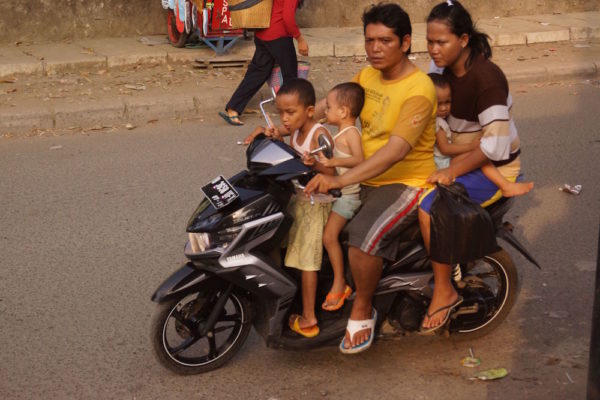 The trip is long. We leave early from our neighbourhood in the suburbs of Jakarta, a depressed area packed with makeshift homes where sewage flows in the open, and rats share space with humans. Hanging laundry and piles of garbage dot the area, until the first shops appear, taking a bit of the squalor away.
The trip is long. We leave early from our neighbourhood in the suburbs of Jakarta, a depressed area packed with makeshift homes where sewage flows in the open, and rats share space with humans. Hanging laundry and piles of garbage dot the area, until the first shops appear, taking a bit of the squalor away.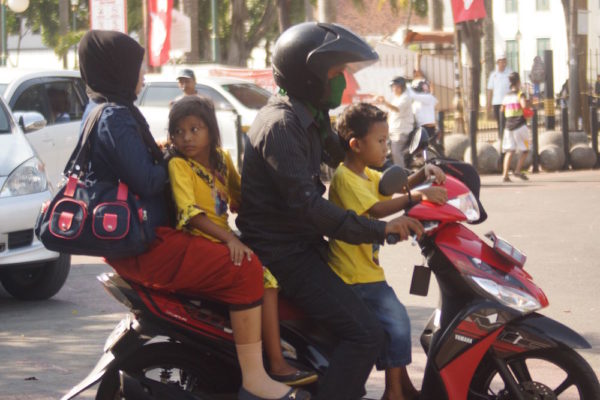 Some traffic lights are more interesting than others because of the hawkers. It is fun to see new things coming up all the time – colourful feather dusters are my favourite, they come in bright blue, pink, yellow and green, and I would give an arm and a leg to be able to touch them and feel the softness of the feathers. At the beginning of the year, huge calendars are on sale, and after elections, the portrait of the president and vice president are at all traffic lights.
Some traffic lights are more interesting than others because of the hawkers. It is fun to see new things coming up all the time – colourful feather dusters are my favourite, they come in bright blue, pink, yellow and green, and I would give an arm and a leg to be able to touch them and feel the softness of the feathers. At the beginning of the year, huge calendars are on sale, and after elections, the portrait of the president and vice president are at all traffic lights.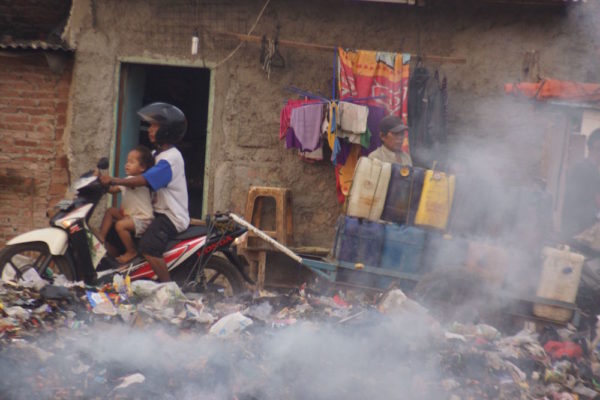 A few days later, at the same traffic light, her car was close to our motorbike again, her window open. She flashed me a huge smile and spoke to me. She was using my language, but I could not understand what she was saying. She said: “Saya dari Italia.” I had never heard that word, Italia, before. Plus, I was intimidated by how strange she looked, with her hair cut short and many different necklaces around her neck.
A few days later, at the same traffic light, her car was close to our motorbike again, her window open. She flashed me a huge smile and spoke to me. She was using my language, but I could not understand what she was saying. She said: “Saya dari Italia.” I had never heard that word, Italia, before. Plus, I was intimidated by how strange she looked, with her hair cut short and many different necklaces around her neck.